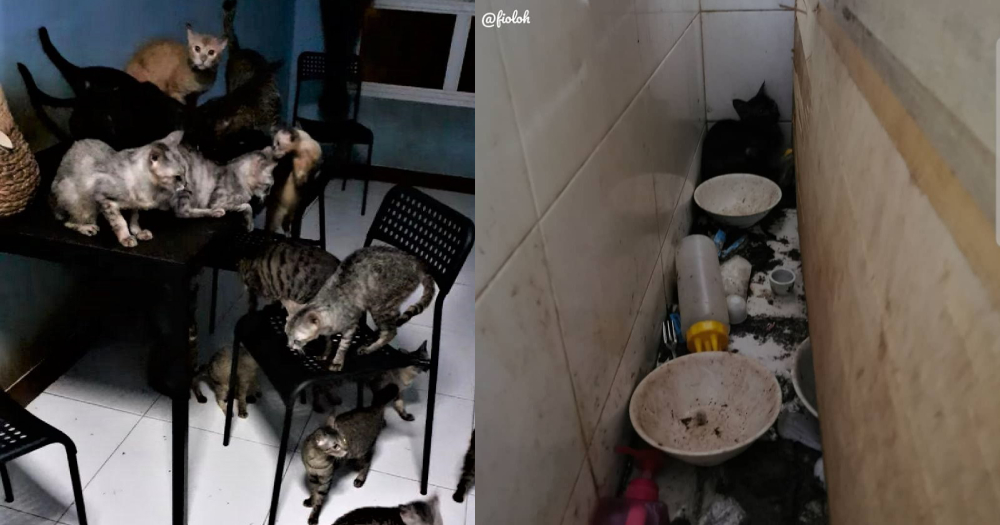Rescuers in Singapore came together to assist with a case of some 32 cats and kittens recently discovered roaming around a Rivervale Crescent flat late last month.
Animal rescuer Fiona Loh publicised this on her Instagram account this week, and told Mothership she came across a post in Sayang Our Singapore Community Cats by Facebook user Watsin Sal, another rescuer, who requested help regarding what rescuers call a "hoarder" case on August 25, 2019.
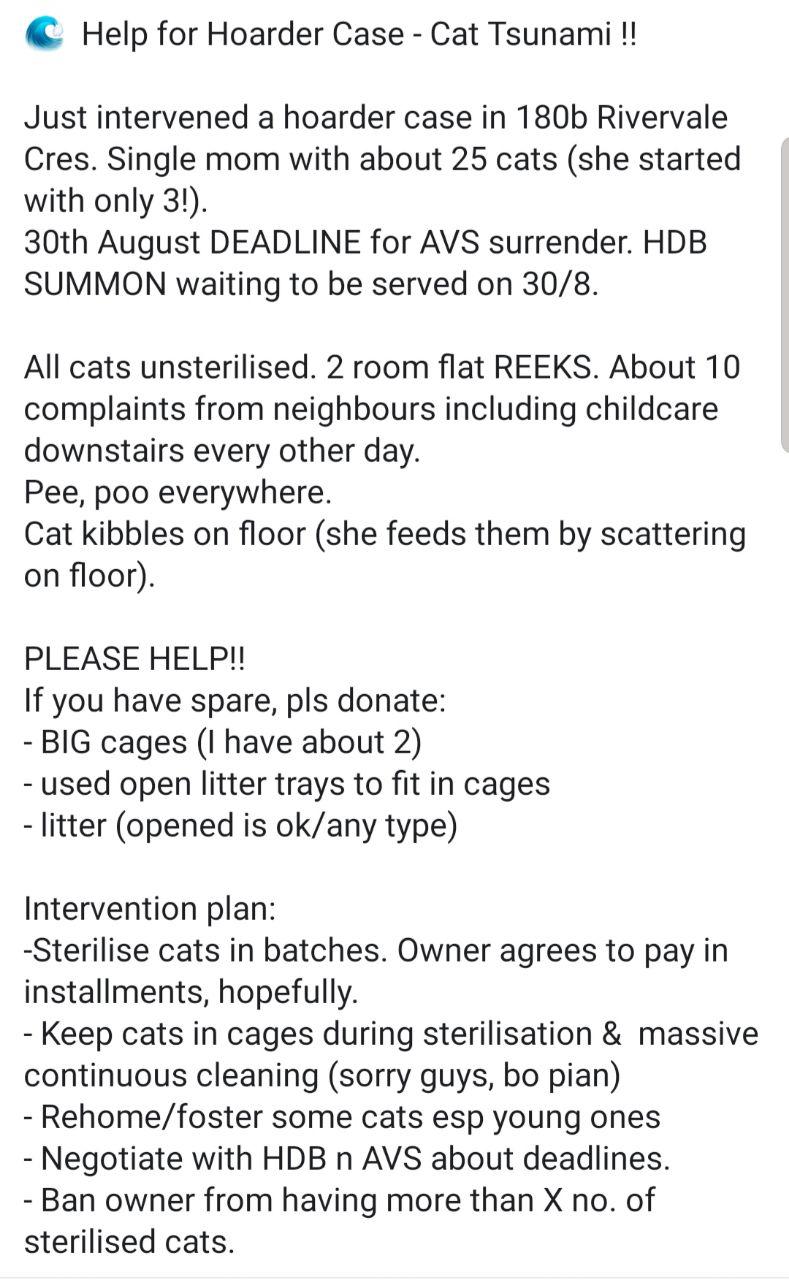 Screenshot via Sayang Our Singapore's Community Cats/FB
Screenshot via Sayang Our Singapore's Community Cats/FB
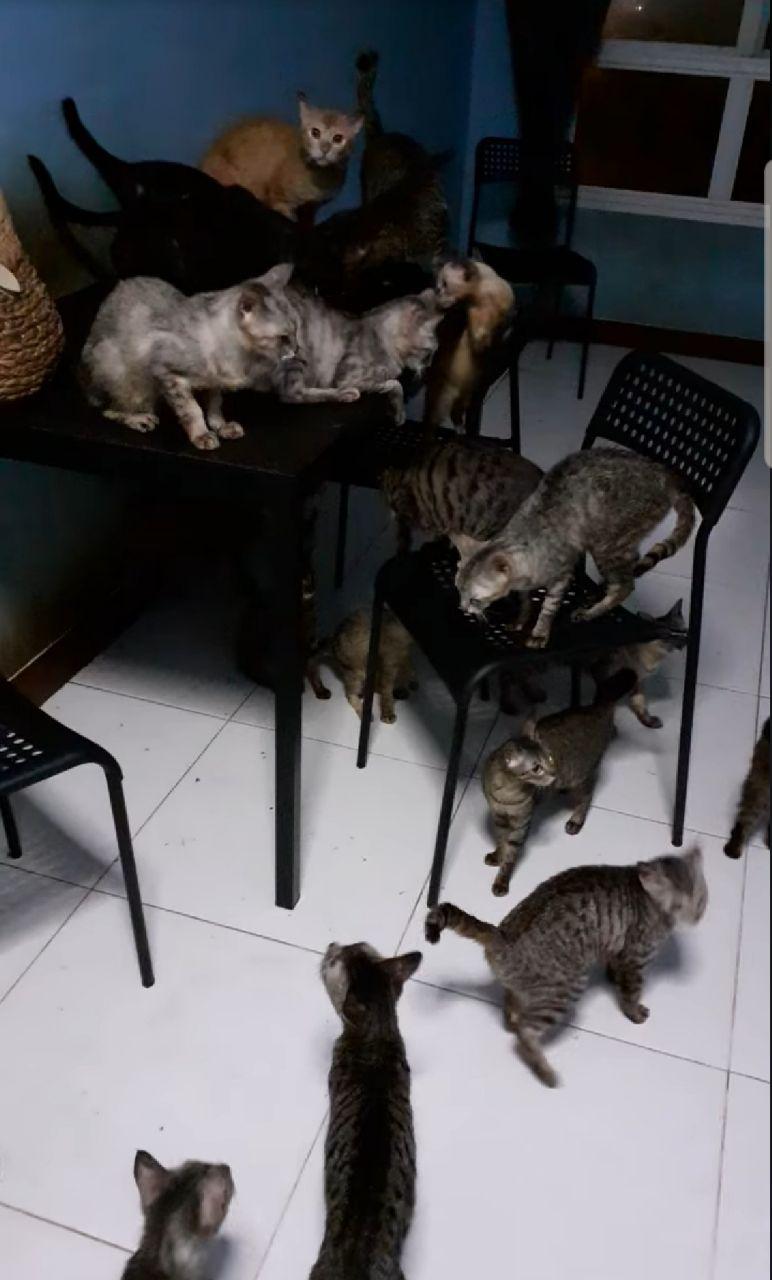 Screenshot via Sayang Our Singapore's Community Cats/FB
Screenshot via Sayang Our Singapore's Community Cats/FB
Loh realised that this was happening in her feeding area, and decided to get involved in the hoarding case.
"If the cats don't get rehomed, eventually these cats will end up being abandoned. And that means I, being the only community cat feeder in this area, would end up having to feed more mouths."
Walls and floor stained with urine and poop
On August 26, Loh and Sal made a trip down to the cat hoarder's flat.
The cat hoarder's HDB flat was in a horrible state, according to Loh's Instagram posts.
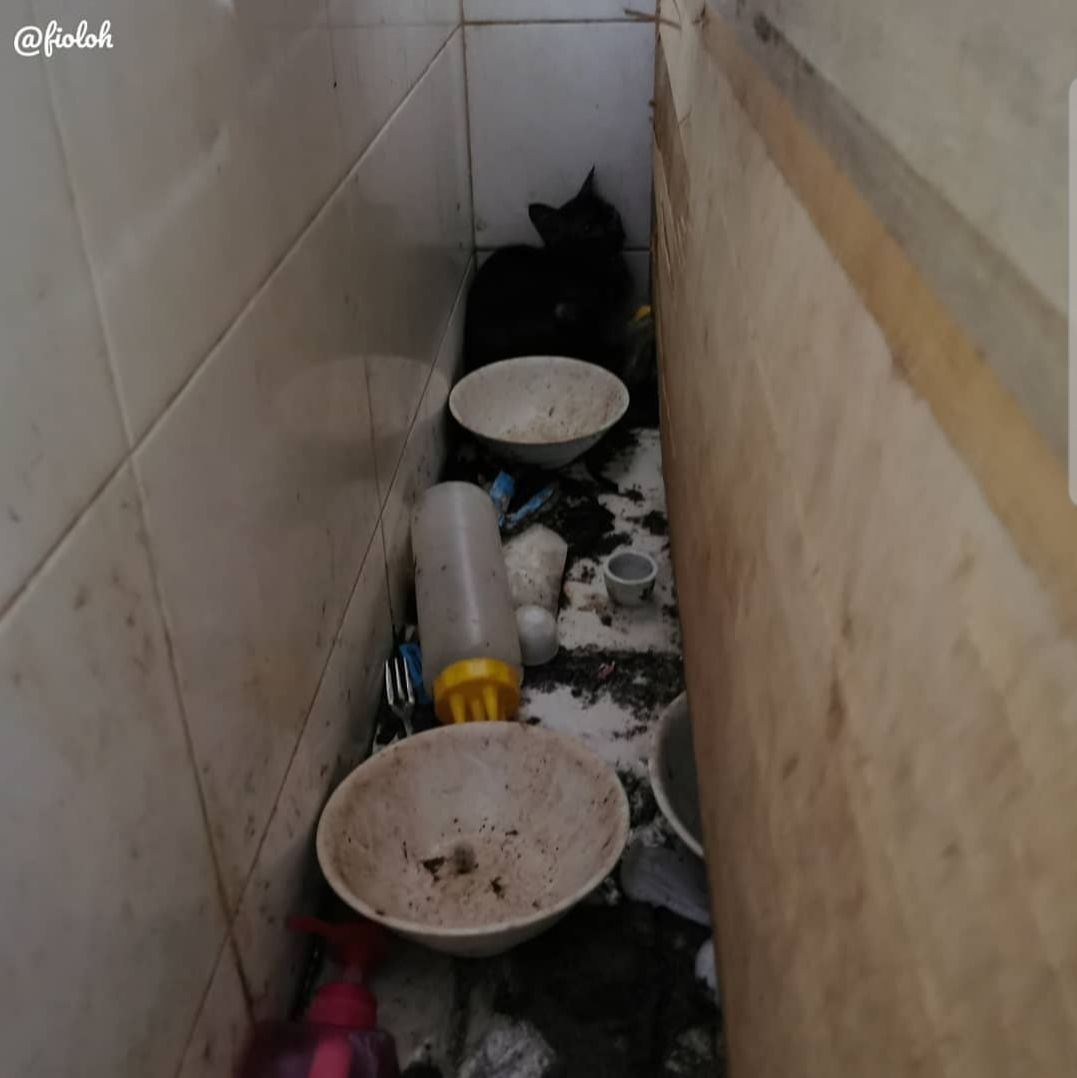 Photo via @fioloh/IG
Photo via @fioloh/IG
The walls and floor of the flat were covered with urine and poop stains, and several furniture items were soaked with urine and poop as well.
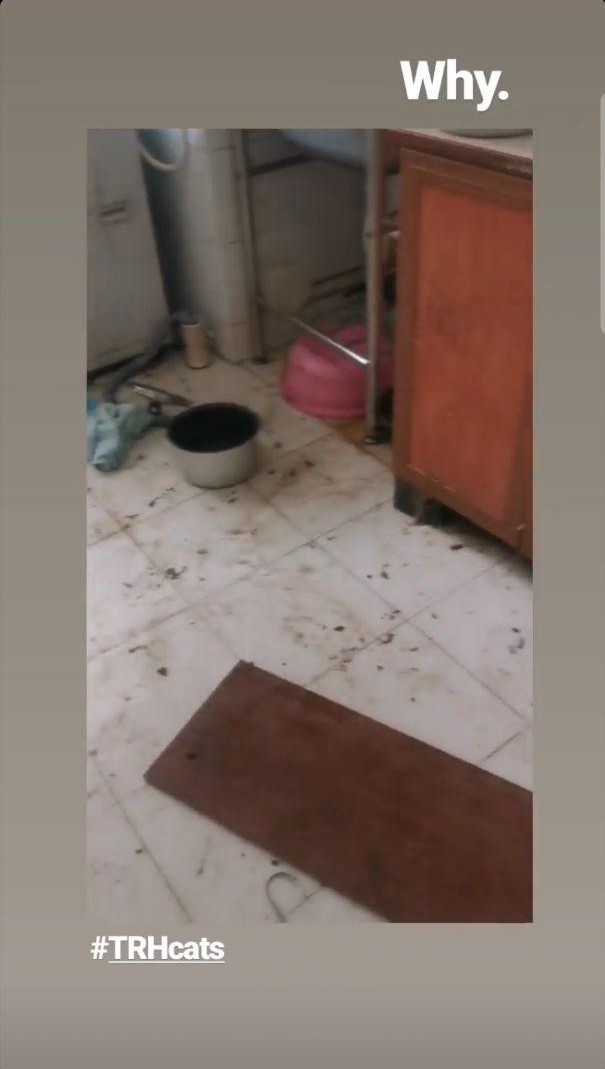 photo via @fioloh/IG
photo via @fioloh/IG
She included a video, if you're curious about how it looks — a word of warning though, it's pretty bad.
The cats themselves were also covered in urine and poop, unsurprisingly.
According to Loh, the hoarder, a single mother of two, has started to clean up the house by scrubbing the walls and floor, and throwing away soiled furniture.
However, she added that the flat is "still far from being clean".
Neighbour furious at sterilised cats being returned to flat, yelled at rescuers
Loh's fellow rescuer arranged for the cats to be sterilised in batches, but they had to take them back to the hoarder's flat as their boarding facility was not ready yet.
When the neighbour saw them returning the cats after sterilisation, she was furious and scolded the rescuers in a fit of rage, for bringing them back.
https://www.instagram.com/p/B18lKnxlFTw/
Loh wrote in her post that the irate neighbour called the authorities insisting that "all the cats must be put to sleep".
Loh also revealed to Mothership that the neighbour also yelled at the rescuers when they provided food for the cats. She said:
"I tried to explain (to her) that the cats couldn't go hungry, because if they are, when I take them out (of the flat), there could be more health issues and the vet bills would be even higher.
But the neighbour was only concerned that by feeding them, the cats would produce more urine and poop."
Cats were unsocialised, never interacted with humans
Loh said her fellow rescuer had arranged for the cats to be sterilised on September 3.
However, Loh said that they were only able to catch 31 out of the 32 cats living there, as the last cat "could not even be caught".
More than half of the cats were unsocialised with humans despite living with the hoarder and her children. Loh added in her post:
"If the hoarder could not even manage to touch her own cat, you should be able to imagine how fearful of humans these cats are.
But we can't blame the cats for being so wary of humans. I would be like them too, if I stay in a house like that."
Based on her observations, Loh estimates that at least 20 of the cats were unsocialised.
Plans for rehoming the cats
For now, Loh says she will be taking the cats out of the hoarder's flat in batches of seven to 10 cats each, and sending them to a boarding facility.
Due to logistics and safety issues, Loh explained that it was not possible for her to take all of them at one go. She wrote:
"But who dares to take out ALL the cats in one go, especially when they are suspected to be parvovirus-positive?
We cannot risk allowing fostering either, because most fosterers and rescuers have other rescue cases with them too."
Parvovirus is a highly contagious virus that can severely infect many animals, including cats and dogs.
It usually affects the immune system and causes gastrointestinal problems, but may also have other effects.
On September 7, Loh brought 10 cats to the boarding facility, to be boarded in an isolation cattery.
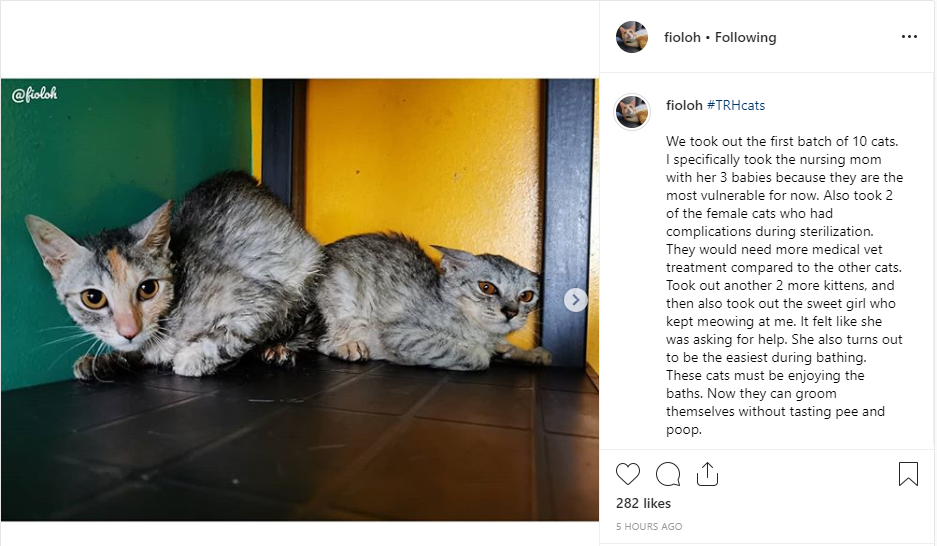 Photo via @fioloh/IG
Photo via @fioloh/IG
Before the cats can be rehomed, Loh mentioned that health checks, micro-chipping and vaccinations were all required.
Some of them may also have to be tested further for other diseases, and get rid of fleas and mites on their bodies, having been covered in urine and poop for a long time.
Appealing for donations
Unfortunately, everything, even helping others, comes at a cost.
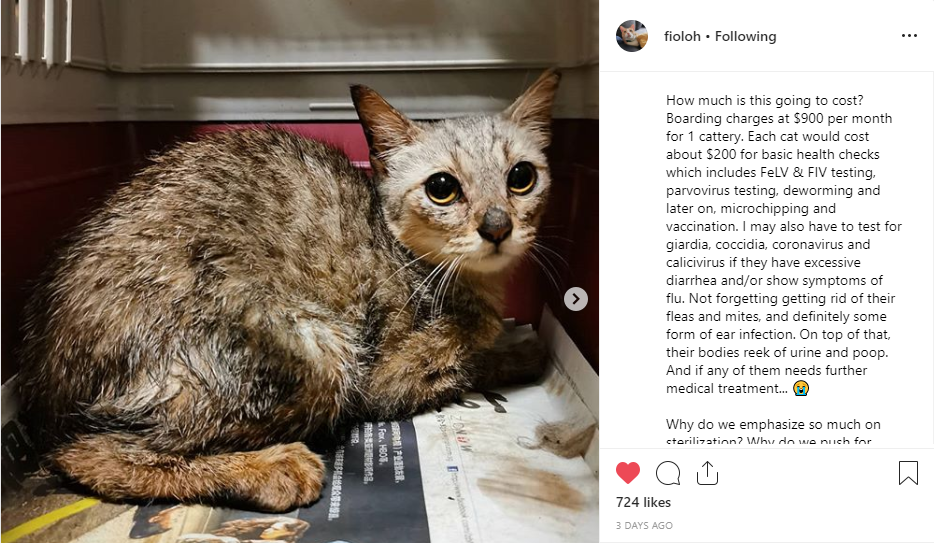 Photo via @fioloh/IG
Photo via @fioloh/IG
The boarding charges for the isolation cattery are about S$900 per month, per cattery, according to Loh.
Basic health checks for each cat set the rescuers back by S$200, amounting to a total of S$6,400 for 32 cats.
Loh lamented in her post that this didn't even include additional vet fees for any possible illnesses and infections the cats may have.
For volunteer rescuers, such costs are usually collected through fundraising or simply paid out-of-pocket.
What makes things worse, though, Loh says, is how often this actually happens.
Hoarding cases with large numbers of cats "very common": rescuer
Loh explains that these are, in fact, very common and happen because the cats are unsterilised, leading to a population "boom", adding that the only way for this to end is for the authorities to push for mandatory sterilisation and microchipping.
She said neighbours can also seek help proactively from the Cat Welfare Society if they may notice something "amiss", or if the stench coming from a person's flat is "too strong":
"Neighbours also play a part. If something is amiss, if the stench is too strong, don't wait till things escalate before seeking help from Cat Welfare Society, who will highlight to rescuers around that particular area, or rescuers who are able to help.
If hoarding cases like this have been highlighted to the authorities, then those staff need to understand that the longer such hoarding cases are delayed, the more cats there will be, and the more difficult it will become to solve the problem.
Cat owners must also have the responsibility to sterilise their own cats quickly, and not wait till something happens."
Take note, pet owners.
How to help the cats
In order to help the cats find new homes eventually, the rescuers need to raise funds to have them checked properly and make sure they're disease-free.
If you are interested in contributing in any way, do contact Loh through Instagram (@fioloh).
Even if you aren't able to help financially, there are several other ways you can help the cats.
Things the rescuers need:
- boarding and medical fees
- wet food (for the cats, duh)
- spot-on applications (flea killer)
- misc. items e.g. shampoo, ear-cleansing solution, towels etc.
Or you could help share her cause, by spreading the word and sharing about her appeal.
And of course, be a responsible pet owner, if you are one.
Cover image via @fioloh/IG, Sayang Our Singapore's Community Cats/Facebook
If you like what you read, follow us on Facebook, Instagram, Twitter and Telegram to get the latest updates.
